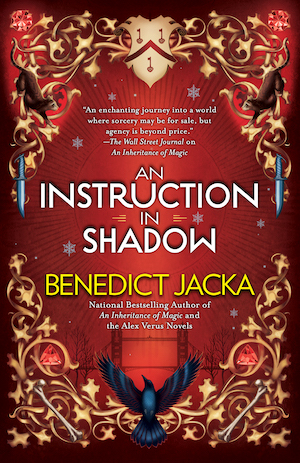You can’t change a sigl after it’s made.
The Limit of Creation states that sigls can not be modified or redesigned. Once they’re created, that’s it – if you want them to do something different, you have to get a new sigl.
Although this restriction might seem uncontroversial, it has been the focus of quite intensive study. In fact, the Limit of Creation is probably the second-most-heavily researched of all of the five, outmatched only by the Blood Limit. This is unsurprising, as the two are closely related.
The Sunk Cost of Sigls
A sigl represents an enormous amount of time and resources. This is particularly extreme once you go up the ranks; while D-class sigls are relatively cheap, a single A-rank sigl costs millions. Of course, for those wealthy enough to afford it, that can actually be quite a good investment – while a high-grade, professionally made solid sigl comes at a fantastic cost, it’s a one-time cost. Since such a sigl can be expected to last for its wielder’s entire lifetime, in practice the benefits it gives, spread out over thirty or forty years, can easily outweigh its price tag. But what about afterwards?
Inevitably, sigls outlast their wielders. Sometimes the wielder dies from old age. Sometimes they perish unexpectedly, from accident or illness. And sometimes they’re relieved of their sigl involuntarily. However it happens, those who inherit the wielder’s property (legally or otherwise) are left with a sigl – potentially a very valuable sigl – that they can’t use. An incredible amount of value and power, right there in the palm of one’s hand, yet totally inaccessible. It’s intensely frustrating, and quite naturally, drucrafters have spent enormous amounts of time and effort trying to solve it.
Unfortunately, solving it is easier said than done.
Difficulties in Modification
The first problem with modifying a sigl is that shaping a sigl is less like assembling a machine, and more like sculpting a piece of pottery, where the clay can be easily moulded when wet, but becomes hard and rigid once fired. In the same way, essentia can be freely sculpted while in its natural state, but becomes hard and unyielding once transformed into aurum. Modifying a sigl thus requires the targeted section (and only the targeted section) to be first transformed into free essentia, then altered, and then turned back into aurum again.
While doing any of these three things on their own is not particularly difficult, doing them together, in order, and without damaging the rest of the sigl in the process, is very, very hard. What makes the problem worse is that, as mentioned in the previous chapter, sigls have three layers: the shell, the outer core, and the kernel . . . and the part of a sigl that drucrafters generally care most about is the kernel. This means that before you can start on any modifications, you have to get through the sigl’s shell and outer core first, and you have to do so without doing irreparable damage to the sigl along the way. This is so difficult as to be, in many cases, functionally impossible.
Workarounds
Despite all these problems, the twentieth century saw a vast amount of research poured into circumventing the Limit of Creation. The prospect of taking the same A-class or S-class sigl and using it over and over again was simply too tempting to resist. Finding a practical solution to the problem would effectively nullify the Blood Limit and break the drucraft economy wide open.
Although many avenues were explored, the most promising one, and the one upon which research eventually came to focus, was “modular sigls”. The idea was to design a sigl with a removable kernel, where the kernel could be extracted and replaced. Thus, by “swapping out” kernels, the same sigl could be used by different people.
Modular sigls worked. Their development caused great excitement in the drucraft community, and many predicted that they would become the new industry standard. However, more than fifty years on, this has not happened. In fact, modular sigls have almost entirely fallen out of production, for several reasons.
First, the modular approach required various compromises in the sigl’s design. Since the kernel couldn’t be fully integrated with the body, much of the sigl had to be built in a less efficient manner. Second, despite their best efforts, the researchers into modular sigls were never able to make them as stable as solid ones. The “sealed sphere” design for sigls is the standard for a reason – it’s exceptionally durable. Modular sigls thus had a shorter lifespan than traditional ones, negating much of the benefit to building them in the first place.
But the biggest reason for the failure of modular sigls was that they were never a true workaround. You can’t convert a standard sigl into a modular one – for it to work, the sigl has to be created as a modular sigl in the first place. This means accepting substandard performance in exchange for the (not at all guaranteed) possibility that someone else will be able to use the sigl in the future. Unsurprisingly, most drucrafters were unwilling to make this tradeoff.
As such, modular sigls fell out of favour, and are nowadays only used as curiosities or for certain very specific purposes.
Starting Afresh
The final “workaround” to the Limit of Creation is simply to remake the entire sigl from scratch. You sublimate the sigl into free essentia, then use that essentia to make a new sigl – essentially the same process that shapers use to create a sigl out of pre-existing aurum. However, this is subject to the same inefficiencies as creating a sigl from aurum, and in any case is basically the equivalent of melting something down for raw materials. Most people would consider this “destroying”, rather than “changing”.


